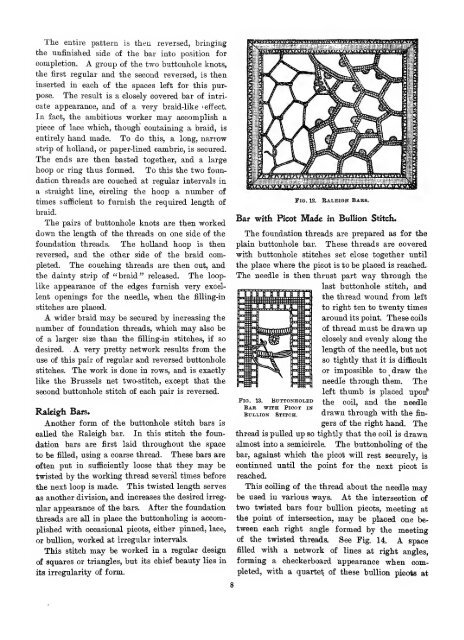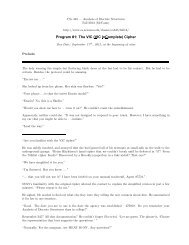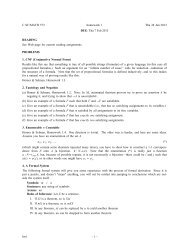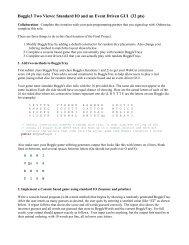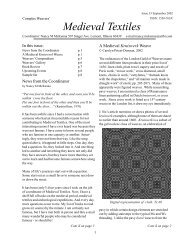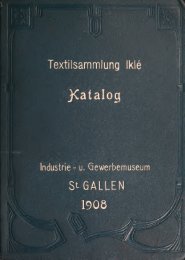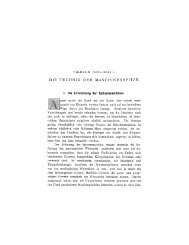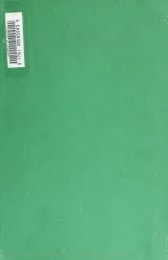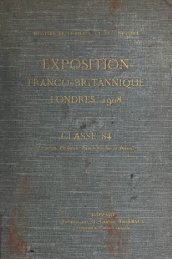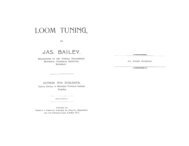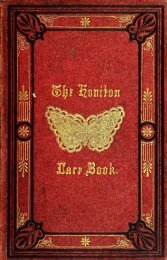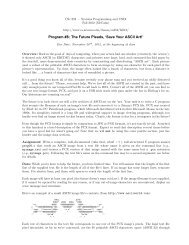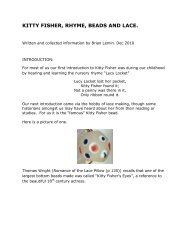The Priscilla Battenberg and point lace book; a collection of lace ...
The Priscilla Battenberg and point lace book; a collection of lace ...
The Priscilla Battenberg and point lace book; a collection of lace ...
You also want an ePaper? Increase the reach of your titles
YUMPU automatically turns print PDFs into web optimized ePapers that Google loves.
<strong>The</strong> entire pattern is then reversed, bringing<br />
the unfinished side <strong>of</strong> the bar into position for<br />
completion. A group <strong>of</strong> the two buttonhole knots,<br />
the first regular <strong>and</strong> the second reversed, is then<br />
inserted in each <strong>of</strong> the spaces left for this pur-<br />
pose. <strong>The</strong> result is a closely covered bar <strong>of</strong> intri-<br />
cate appearance, <strong>and</strong> <strong>of</strong> a very braid-like 'effect.<br />
In fact, the ambitious worker may accomplish a<br />
piece <strong>of</strong> <strong>lace</strong> which, though containing a braid, is<br />
entirely h<strong>and</strong> made. To do this, a long, narrow<br />
strip <strong>of</strong> holl<strong>and</strong>, or paper-lined cambric, is secured.<br />
<strong>The</strong> ends are then basted together, <strong>and</strong> a large<br />
hoop or ring thus formed. To this the two foun-<br />
dation threads are couched at regular intervals in<br />
a straight line, circling the hoop a number <strong>of</strong><br />
times sufficient to furnish the required length <strong>of</strong><br />
braid.<br />
<strong>The</strong> pairs <strong>of</strong> buttonhole knots are then worked<br />
down the length <strong>of</strong> the threads on one side <strong>of</strong> the<br />
foundation threads. <strong>The</strong> holl<strong>and</strong> hoop is then<br />
reversed, <strong>and</strong> the other side <strong>of</strong> the braid com-<br />
pleted. <strong>The</strong> couching threads are then cut, <strong>and</strong><br />
the dainty strip <strong>of</strong> "braid" released. <strong>The</strong> loop-<br />
like appearance <strong>of</strong> the edges furnish very excel-<br />
lent openings for the needle, when the fiUing-in<br />
stitches are p<strong>lace</strong>d.<br />
A wider braid may be secured by increasing the<br />
number <strong>of</strong> foundation threads, which may also be<br />
<strong>of</strong> a larger size than the fiUing-in stitches, if so<br />
desired. , A very pretty network results from the<br />
use <strong>of</strong> this pair <strong>of</strong> regular <strong>and</strong> reversed buttonhole<br />
stitches. <strong>The</strong> work is done in rows, <strong>and</strong> is exactly<br />
like the Brussels net two-stitch, except that the<br />
second buttonhole stitch <strong>of</strong> each pair is reversed.<br />
Raleigh Bars.<br />
Another form <strong>of</strong> the buttonhole stitch bars is<br />
called the Raleigh bar. In this stitch the foun-<br />
dation bars are first laid throughout the space<br />
to be filled, using a coarse thread. <strong>The</strong>se bars are<br />
<strong>of</strong>ten put in sufficiently loose that they may be<br />
twisted by the working thread several times before<br />
the next loop is made. This twisted length serves<br />
as another division, <strong>and</strong> increases the desired irreg-<br />
ular appearance <strong>of</strong> the bars. After the foundation<br />
threads are all in p<strong>lace</strong> the buttonholing is accom-<br />
plished with occasional picots, either pinned, <strong>lace</strong>,<br />
or bullion, worked at irregular intervals.<br />
This stitch may be worked in a regular design<br />
<strong>of</strong> squares or triangles, but its chief beauty lies in<br />
its irregularity <strong>of</strong> form.<br />
nrrmn<br />
Fig. 12. Ealeigh Babs.


